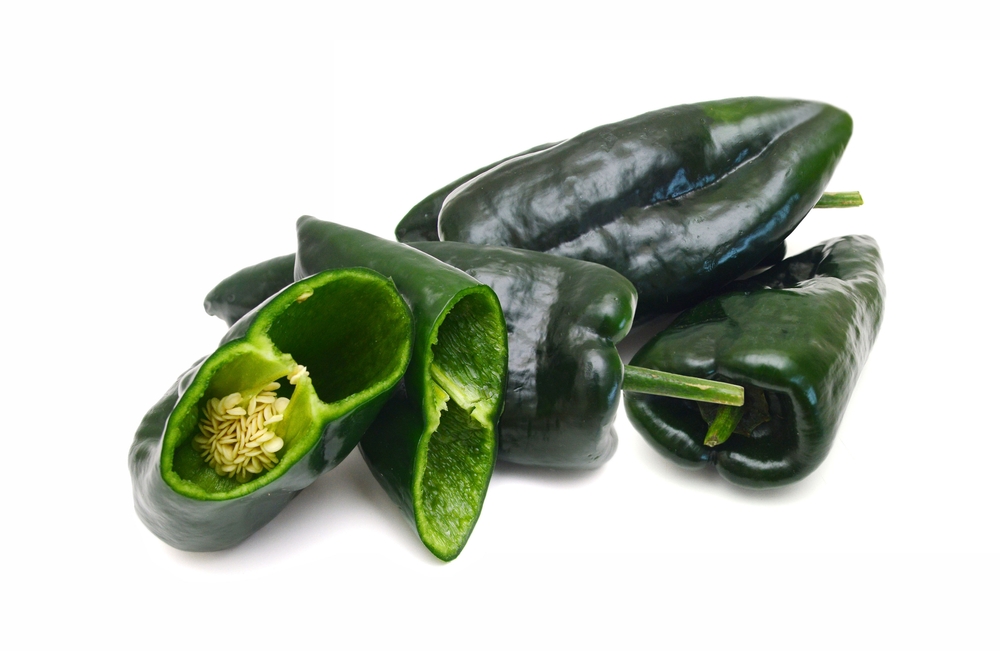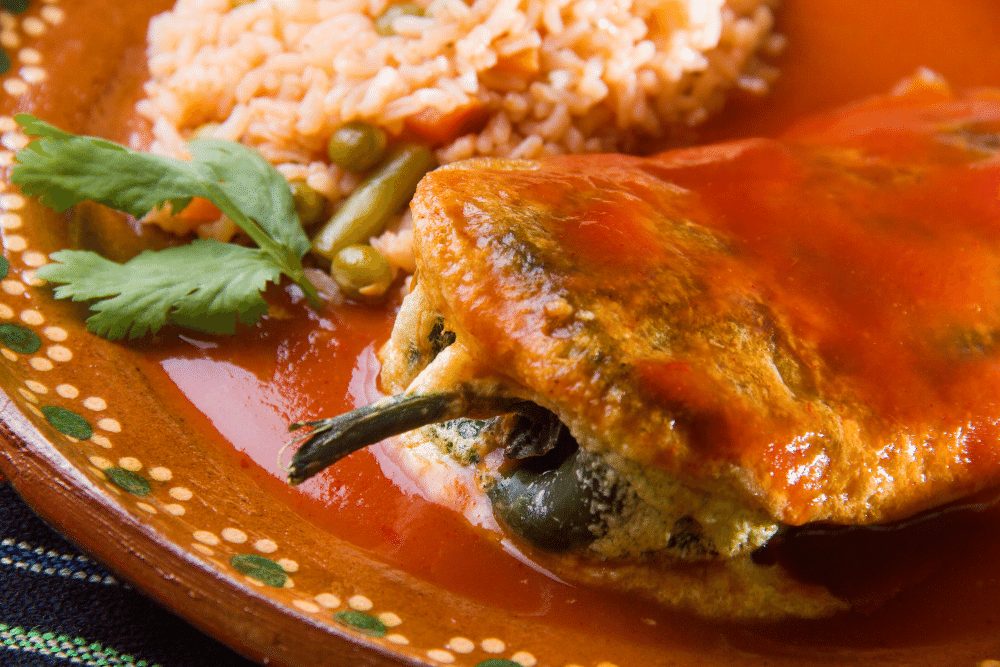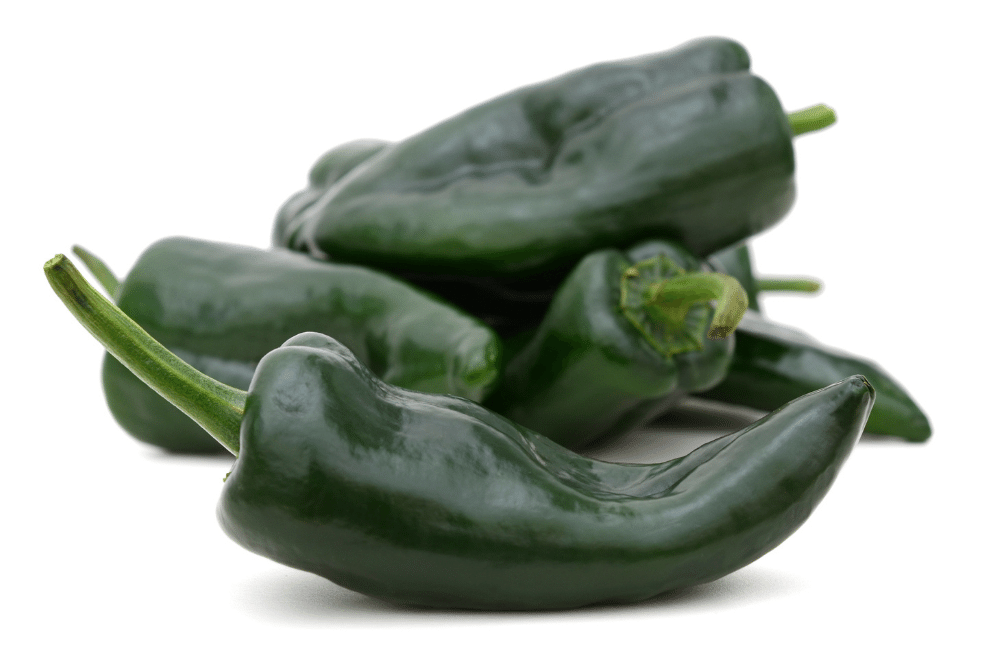The poblano pepper is one of the most popular and versatile mild chilis. This large, dark green and flat pepper is the workhorse of Mexican cuisine and is used fresh, dried, ground, and prepared in several ways - all of them delicious.
What Are poblano Peppers
Originating in Puebla, Mexico, poblanos are mild, dark green peppers that are a regular feature of Mexican food.
At maturity, they are roughly 4 inches long and go from a deep green to a dark red as they are left on the vine to ripen. Most of the time, poblanos are picked for use while green, although once red, they can be dried and utilized in different ways.
They look a bit like an elongated heart when fully grown, and this length and shape make them ideal for creating stuffed peppers. Their fresh, vegetal flavor is reminiscent of green bell peppers but without the sharpness.

They can be eaten fresh or cooked. When dried, they’re referred to as ancho chiles and are often used in Tex-Mex recipes in addition to traditional Mexican fare.
How Hot Are Chile poblanos?
Poblano chiles are very mild, registering only 1,000-2,000 Scoville heat units (SHU).
This mild heat is ideal for those who want flavor without a lot of spice. It also makes poblano peppers ideal for cooking, as the mildness allows other flavors in a dish to shine through.
The following can help put the heat level of the poblano into perspective:
- Habanero peppers, 100,000-350,00 SHU
- Poblano peppers, 1,000-2,000 SHU
- Jalapeno peppers, 2,500-8,000 SHU
- Anaheim peppers, 500-2,500 SHU
Poblanos left on the vine until red will have a higher Scoville rating than those picked green.
What Is Chile poblano Used For?
There’s no end to how poblanos can be used! While you can certainly eat raw, fresh poblanos, they are better cooked.
The outer skin of the poblano is thick and less palatable when raw. That same thick skin, however, stands up well to roasting.
Many pepper recipes call for roasting poblanos. This not only allows the skins to be easily removed, but it can also deepen the flavor.
You can roast poblanos in several ways:
- Under the broiler. Place peppers on a sheet pan and roast on broil, turning once or twice as the skin blisters. Keep an eye on them so as not to completely burn the peppers.
- Grill. Roasting on a charcoal grill can provide an additional layer of flavor.
- Gas stove. Using tongs, hold peppers over a gas flame until the skin is blistered and charred.
- Stovetop. Blistering the poblano in a comal (iron skillet) is another traditional way to soften the skin for easy removal.
After roasting poblanos in your preferred manner, place the peppers in a plastic bag or wrap them in paper towels and set aside for several minutes. When you remove the peppers, most of the skin should easily peel off.
Once roasted, they can be added to soups, sauces, salsas, or just diced and used to top tacos.
A quick search will return many Mexican recipes that utilize poblanos.
Drying poblanos is another prevalent practice. If you intend to dry them, don’t use green poblanos. Allow them to ripen, and dry them once they’ve turned red. Once dried, poblano peppers are called ancho chiles.
Some of the most popular recipes utilizing poblano peppers include:
- Chiles en Nogada. Meat-stuffed poblanos in a cream sauce.
- Rajas. Pepper strips cooked in a cream sauce with cheese.
- Mole sauce. Traditional sauce is served over meat, enchiladas, and many other dishes. Mole uses ancho chile and other dried chiles.
One of the most beautiful things about Mexican cuisine is the regional and even family nuances applied to every dish. The recipes above can vary greatly depending on where they’re being prepared and who’s preparing them.
Are Poblanos Used For Chile Rellenos?
One of the most common and popular ways to use roasted poblanos is for chile rellenos. These are poblano chilis stuffed with cheese, breaded, fried, or baked.

Chile rellenos can also be made using fresh Anaheim peppers or chilaca peppers (the fresh version of pasilla chiles).
Chilaca peppers and poblanos are very similar in flavor and heat profile, but chilacas are smaller chilis and won’t hold as much when stuffing. They can also be quite fragile as they have thinner walls.
Chile rellenos are often served topped with a salsa roja or salsa verde.
Where To Buy poblano Peppers
Next to jalapenos, poblano peppers are one of the easiest peppers to find. Nearly all grocery store chains will carry fresh poblano peppers and dried ancho chiles, either whole or powdered.
Substitutes For Chile poblanos
If you’re in a pinch and need a quick substitute for a poblano, a few peppers can step in and do the trick. Which one you choose will depend upon the recipe.
- Anaheim peppers. Mild, long chili pepper with thinner walls than the poblano and sweet, fruity flavor.
- Green bell peppers. With 0 SHUs, bell peppers are considered sweet. They will also have a slightly different flavor profile but are large enough to be stuffed and have thick walls that stand up to roasting.
- Pasilla peppers. Smaller and thinner skinned, these have a similar flavor and can be stuffed.
- Jalapeno peppers. Difficult to stuff and spicier than poblanos, but the flavor is close enough to make a suitable substitute.
How To Make Roasted poblano Cream Sauce
A widely utilized and favored way to prepare poblanos is in a roasted poblano cream sauce. This easy sauce can top pasta, tacos, chicken, or just about anything else.
The sauce comes together quickly with simple ingredients like poblanos, sour cream, onions, garlic, lime juice, and cilantro. You’ll want to roast the poblanos and remove the skin and saute the onions. Then simply add everything to a blender!
Check out this detailed recipe for poblano sauce on PepperDodo.

